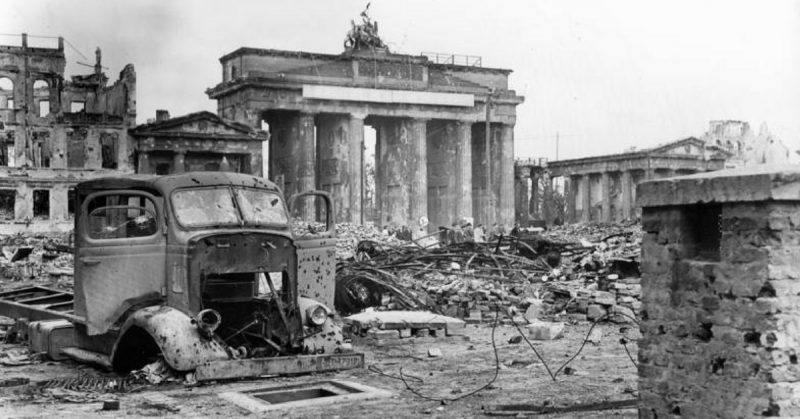The capture of Berlin by the Red Army was not the final act of WWII, but in Europe, it was a dramatic symbol of the fall of the Third Reich and an end to Nazi terror.
Two Attacks
In the spring of 1945, two Russian armies were approaching the German capital. Marshals Ivan Koniev and Georgii Zhukov both wanted the honor of taking the city. Stalin let them compete to show off their skills.
On April 20, Hitler’s birthday, the first Russian shells fell on Berlin. What followed was a brief but brutal fight.
Chaos in Command
The German command was shattered. A succession of different officers had led the armed forces in the city. General Weidling, an artillerist, was eventually the commander who surrendered, but even the supremacy of professional officers was not clear. Josef Goebbels, as district governor, had been given extensive powers to defend the city. Hitler himself had always been prone to meddling in military decisions.
There was chaos at the top of the German military machine.
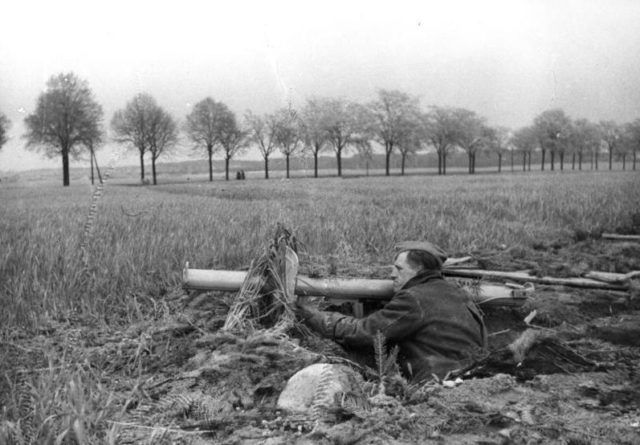
The Defenders
The troops defending the city were a varied assortment. Every German military unit was battered and under strength. Many of the infantry involved were from Panzer regiments, trained to be part of armored strike forces. One of the few coherent formations was Mohnke’s Battle Group. It was a force of around 1,000 soldiers from the SS, the infamous political-military force, who were defending the Reichstag, the parliament building.
Alongside those soldiers were old men of the Volkssturm, Germany’s home guard, and teenagers of the Hitler Youth.
The Will to End the War
The Soviets had taken beatings as they crossed Germany, but their armed forces were much larger and better equipped with tanks and artillery.
For them, Berlin represented the end of the war. For four years, they had fought against the German invaders. Now the tables were turned. Long years of suffering were to end in vengeance.
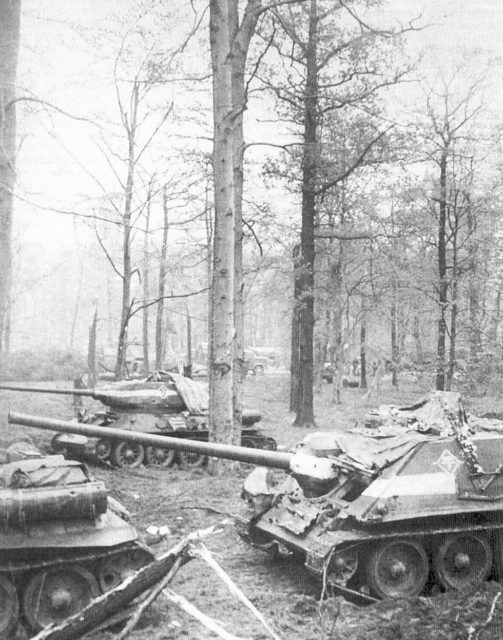
Waiting for the Amis
Many Germans believed their best chance lay with their other enemies – the Americans and British. They rightly believed that conflict between those capitalist nations and the USSR was inevitable. They also thought the war would continue with the Amis and Tommies rallying Germany to their side for an immediate attack against the Soviet menace.
However, America and Britain had already divided responsibilities with the Russians. Berlin was being left to the Soviets.
Bitter Fighting and Bread Lines
As the Russians entered the city, bitter fighting broke out. German forces built barricades and used rockets to stop Soviet tanks. Gunfire and shells raked the streets.
As the fighting moved toward the heart of the city, civilians continued with life as best they could. Theirs was not the calm, comfortable life they had known before. For months they had faced shortages and uncertainty. Breadlines formed, were broken up as fighting reached them, and then reformed as people sought what little food they could get.
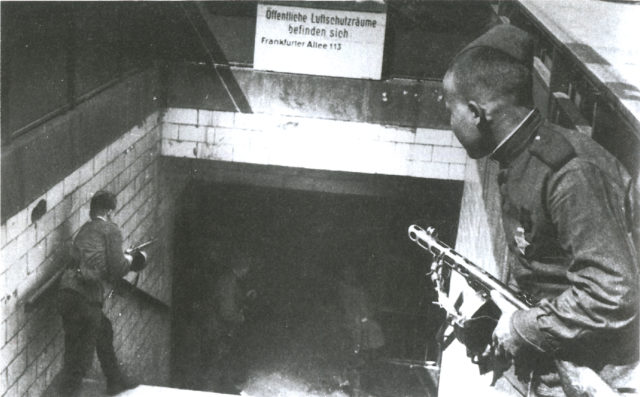
Bunker Mentality
In Hitler’s bunker, the German high command had spent months sheltered from reality, but the implication of their failure could no longer be avoided. News arrived daily that could not be ignored and proved their empire was doomed.
On April 30, Hitler gave in to the inevitable; he killed himself.
The Red Banner of Victory
On the same day, Russian forces stormed the Reichstag. The 1st Battalion of the 756th Regiment was given the honor of leading the charge and raising the Red Flag of Victory above the building.
The fighting for the Reichstag was incredibly fierce. The defenders were SS troops, including French fascists of the Charlemagne Legion. They must have known they could not win. Their ideological passion and the likelihood that even if they were to surrender they would be tortured and killed led them to fight to the last in the face of the brutal Soviet assault.
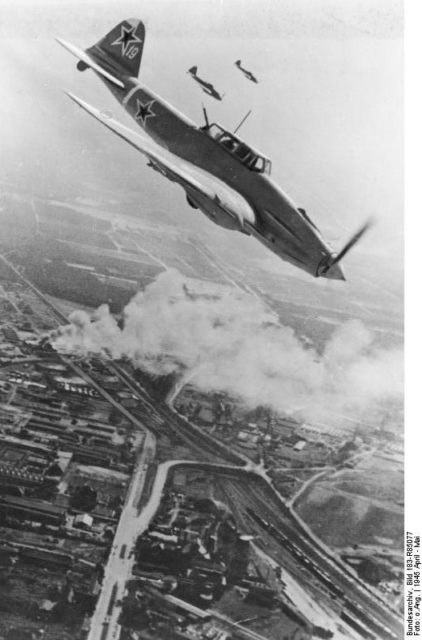
Funeral
In preparing for his suicide, Hitler had ordered that he and Eva Braun were to be cremated using 200 liters of gasoline, to ensure that no identifiable remains were left behind.
What followed would have been comical if it were not so tragic. German officers risked their lives to gather the fuel and burn the bodies, even as shells rained down on the area outside the bunker where the cremation took place. It was an ignominious end to Hitler’s monstrous career.
Surrender
With Hitler dead, surrender became a real possibility. Elsewhere in Germany, Himmler had already reached out to the western Allies. The commanders in Berlin had to talk with the Soviets.
While some German leaders tried to flee the city, others tried to reach out to their opposite numbers and make peace. It was Weidling who eventually negotiated the surrender. Using radio and messengers under white flags, he managed to get through to the Soviet command. At 0600 on May 2, he surrendered the city to the Soviets. He made an agreement with General Vasili Chuikov that all German troops still in the city would lay down their arms and become prisoners.
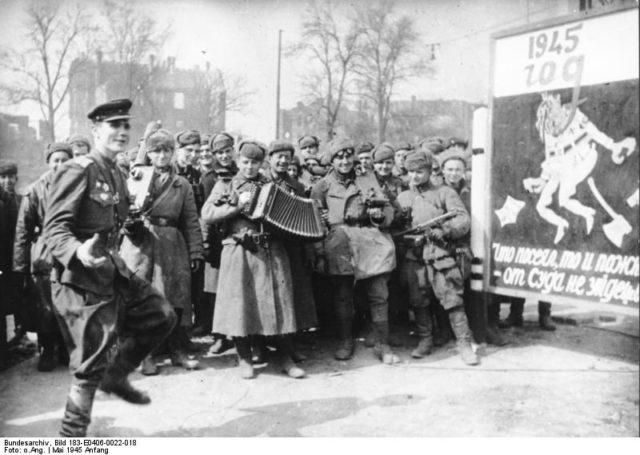
Aftermath
The city the Soviets took control of was a scorched ruin, but the Germans had brought death and destruction to their country, and they were set on revenge.
Looting and raping followed. Some of the German soldiers who surrendered were beaten or killed. When a semblance of normality was eventually restored, the city was divided between the conquering Allies.
For Berlin, it was the consequence of having served a madman.
Source:
Nigel Cawthorne (2004), Turning the Tide: Decisive Battles of the Second World War
James Lucas (1986), Last Days of the Reich
